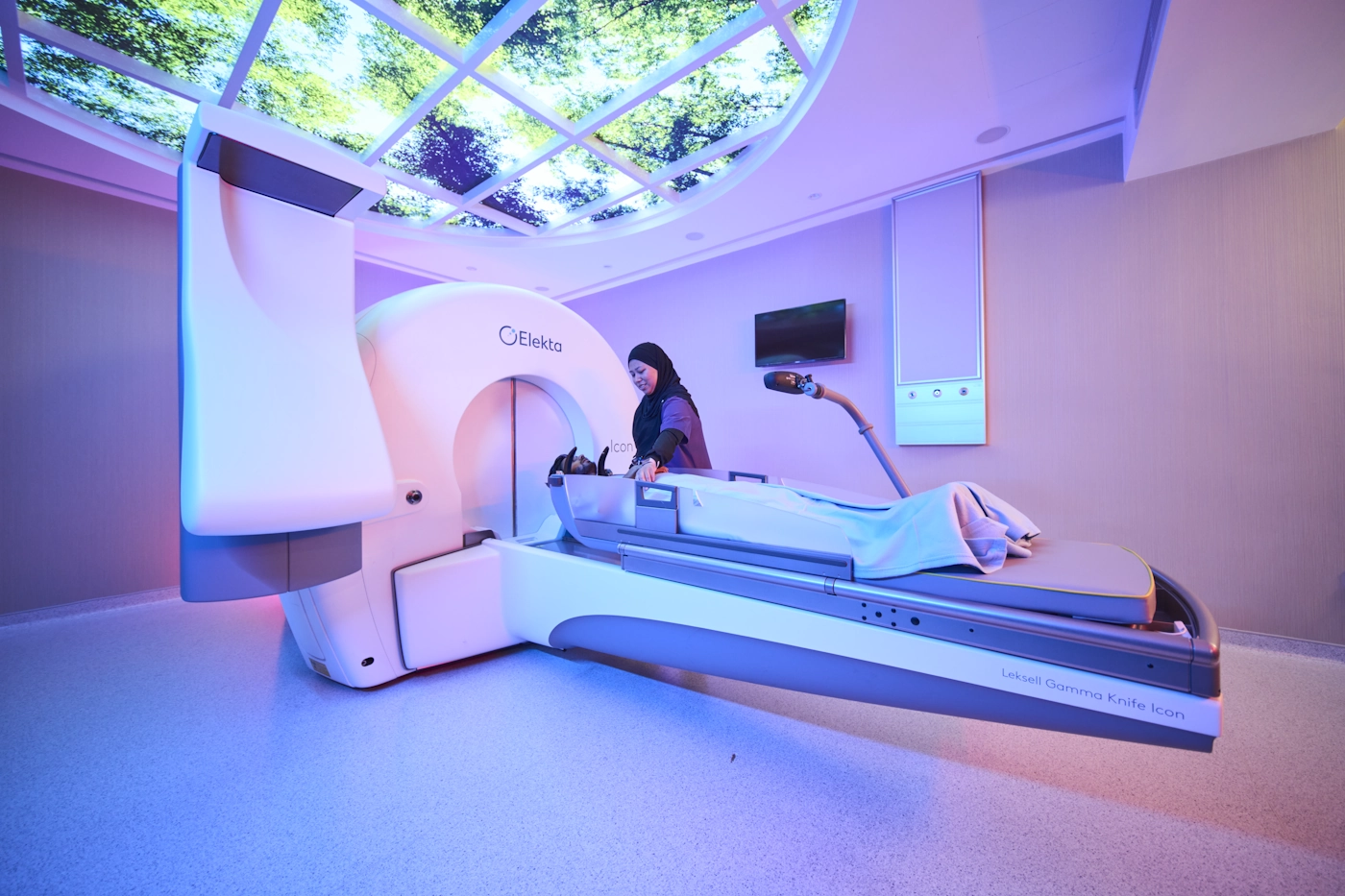

Bedah radiasi gamma knife adalah bentuk terapi radiasi yang akan mengarahkan ratusan sinar laser individual ke bagian tumor secara akurat. Metode ini menggunaan perangkat lunak komputer untuk perencanaan pembedahan agar dapat membantu dokter mengidentifikasi lokasi dan menembakkan radiasi di area kepala dan otak dengan presisi. Pembedahan radiasi Gamma Knife mengarahkan radiasi yang intens ke area target, namun tetap menjaga jaringan sehat di sekitarnya. Metode ini sering digunakan sebagai pengobatan alternatif untuk kemoterapi, pembedahan, dan jenis onkologi radiasi lainnya.
Tingkat akurasi dan presisi tinggi: Menembakkan radiasi dengan dosis tinggi, namun tidak merusak jaringan sehat di sekitarnya.
Non-invasif: Karena metode ini tidak memerlukan adanya sayatan, maka risiko komplikasi akibat pendarahan, infeksi, atau kebocoran cairan otak akan menurun.
Pemulihan yang bebas nyeri dan lebih singkat: Pasien tidak memerlukan masa rehabilitasi dan dapat segera melanjutkan aktivitasnya lagi.
Tidak memerlukan rawat inap: Metode ini biasanya dilakukan sebagai layanan rawat jalan, dan kadang membutuhkan rawat inap hanya satu malam.
A: Ketika memasang alat fiksasi posisi kepala, Anda akan diberikan injeksi bius lokal dan dapat merasa sakit (karena injeksi). Namun, metode Gamma Knife itu sendiri sama sekali tidak sakit.
A: Pemindaian dan bedah radiasi gamma knife akan menghabiskan waktu seharian. Namun, waktu yang Anda habiskan di dalam mesin Gamma Knife akan berbeda-beda, tergantung ukuran area target dan berapa "tembakan" laser yang dibutuhkan. Waktunya dapat bervariasi, mulai dari 30 menit hingga beberapa jam.
A. Tidak.
A: Satu-satunya sensasi yang akan Anda rasakan adalah tekanan dari alat fiksasi posisi kepala di kulit kepala Anda. Anda juga dapat melihat lampu merah yang berkedip di ruangan, yang mengindikasikan pembedahan masih berjalan.
A: Hal ini jarang terjadi. Namun, jika area yang ditangani memang dekat dengan permukaan kulit, maka kerontokan rambut dapat terjadi di area tersebut.
A: Secara umum, perubahan pada sel-sel yang ditargetkan ini dapat berlangsung selama beberapa bulan. Anda akan membutuhkan pemeriksaan dan pemindaian MRI secara berkala untuk memonitor perubahan. Anda akan mengunjungi konsultan Anda 4 minggu setelah operasi, serta menjadwalkan pemindaian MRI 6 minggu setelah pembedahan jika Anda menjalani metode ini sebagai pengobatan kanker.
Orang yang memiliki tumor jinak juga akan diperiksa 6 bulan setelah pembedahan, dan pemindaian MRI juga akan dijadwalkan.
A: Segera setelah Anda merasa cukup sehat. Mungkin satu hari setelah pembedahan, atau beberapa hari setelahnya.


